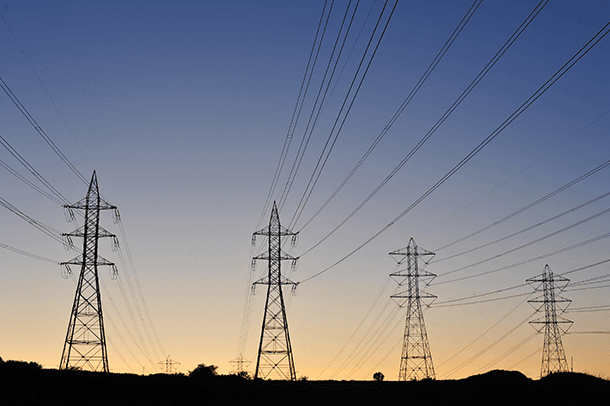Study shows US could convert its economy to renewable energy without battery breakthrough
High-voltage direct current transmission lines could help transfer electricity over long distances much more efficiently and make renewable energy more viable.
A new study from NOAA shows that, by building new high-tech transmission lines, the US could slash energy sector global warming emissions by 80 percent within 15 years, while keeping consumer costs low and meeting increased demand.
Alexander MacDonald, a co-author of the study and the recently retired director of NOAA’s Earth Systems Research Laboratory in Boulder, Colorado, says studying the national weather map gave him the idea.
“I heard people talking about how renewable energy doesn't work because it's intermittent, and I remember saying, ‘It's intermittent if you just have it over a really small area, but weather is big,’” MacDonald recalls. “If you look at a weather map, you see, for example, a giant high [pressure system] in the western United States and a low [pressure system] that's windy in the east, and you can kind of deduce that if you can share the power over a large area, then it's not intermittent. So I wanted to find out if that was true.”
MacDonald’s study, called NEWS, the National Electricity with Weather System, began six years ago. It uses a complicated optimization model based on weather forecasting to analyze the cost of energy production.
“I decided, with my team, that we would do a ‘cost minimization,’ MacDonald explains. “In other words, we would allow wind, solar and other sources, like natural gas, and even nuclear and coal, to be part of the study and we would minimize the total cost of the system, with the requirement that it supplied electric energy to 250 places over the United States every hour for a year.”
The team found that the larger the geographic area, the more effectively wind and solar can compete with other energy sources — for the exact reason MacDonald hypothesized. He explains it this way:
“In a small area, if the wind stops in part of the area, it stops over most of the area. Take the state of Kansas: if it's not blowing on one side of Kansas, it's probably not blowing on the other side. However, if you take the whole [lower] 48 states, you can always find places where it is pretty windy. That’s essentially what the study showed us.”
The study had another intriguing result: It showed that renewable energy can compete on price even without a major breakthrough in battery storage technology.
“We included storage as one of the things we could use,” MacDonald says. “We included transmission where we could move power over a small area or we could move it over the whole country. We basically said to this optimization [program], ‘You choose what is the best option.’”
The optimization chose transmitting power across the country as the least expensive way to use wind and solar energy. “It showed that we could have costs of electricity about the same as today, but it would reduce carbon dioxide up to 80 percent — so I think it’s a pretty important result,” MacDonald says.
There is a possible downside to the findings. In order for the system to work as efficiently as MacDonald and his team calculate, the nation would have to build massive transmission lines that would send high voltage direct current from coast to coast.
These lines can transmit “huge amounts of electric energy a long ways, but still within the cost envelope of the studies that we looked at,” MacDonald says.
But recent history has shown that people strongly oppose these powerful transmission lines passing through their neighborhoods or across their farms.
“I think people are going to have to weigh it like everything else,” MacDonald says. “If we want to preserve the future, this shows policymakers a way to do it — and it's not for free. You might have to have overland lines; you might have to pay extra money — say, add a penny per kilowatt hour to your electric bill to have underground lines. But it gives us an option to have a low-carbon and low-cost energy economy, and we think that's a pretty valuable possibility.”
This article is based on an interview that aired on PRI's Living on Earth with Steve Curwood
